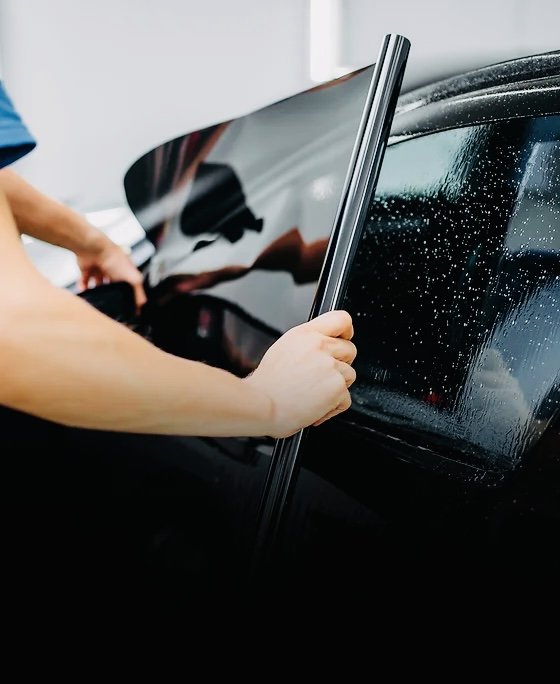Your Comprehensive Guide to DIY Window Tinting: Advice
Undertaking a DIY home window tinting job offers a possibility to improve both the performance and appearances of your room. Prior to embarking on this undertaking, it is important to browse the complexities of regional tinting regulations and choose a proper film that straightens with your purposes.
Comprehending Window Tinting Laws
Browsing the detailed landscape of window tinting regulations is necessary for any kind of DIY fanatic looking for to improve their vehicle's appearances and convenience. Each state in the united state has particular guidelines regarding the permitted degrees of color on various windows, which can dramatically impact your decision-making procedure.
Usually, these regulations dictate the maximum allowable Noticeable Light Transmission (VLT) percent, which refers to the amount of light that can go through the tinted home windows. Some states permit only a specific percent of color on the front windscreen, while permitting darker shades on back windows. Compliance with these policies is crucial, as failure to adhere can result in penalties or the need to remove the tint entirely.
Furthermore, there are usually differences in between passenger cars and commercial lorries, with various policies putting on each classification. It's a good idea to consult your local Department of Electric motor Vehicles or comparable authority to gather accurate details tailored to your area. Comprehending these legislations not only guarantees lawful conformity however also improves safety by maintaining visibility and preventing possible risks while driving.
Picking the Right Color Film
Choosing the proper tint movie is an important step in the do it yourself window tinting process, as it directly influences both the look and performance of your vehicle's home windows. A number of factors should guide your choice, consisting of the sort of movie, its legal conformity, and your preferred outcomes.
First, consider the different types of tint films readily available: colored, metalized, ceramic, and hybrid. Metalized films offer enhanced heat rejection and resilience yet can interfere with electronic signals.
Next, ensure that the film sticks to regional guidelines concerning noticeable light transmission (VLT) percents. Conformity with these regulations is critical to stay clear of fines and ensure security.
Necessary Devices for DIY Tinting
Having chosen the appropriate tint film for your windows, the following action involves gathering the needed tools to ensure an effective installment. The main devices you will certainly require include an energy knife or a razor blade, which is vital for reducing the tint movie to the desired dimension. A squeegee is additionally essential, as it aids remove air bubbles and smooth out the movie during application.

Additionally, think about utilizing a warm gun or hairdryer, as this can aid mold and mildew the tint film to the shapes of the home window and facilitate adherence. Handwear covers are suggested to prevent finger prints on the movie during installation. By gathering these essential devices, you will be well-prepared to tackle your do it yourself window tinting task efficiently.
Step-by-Step Application Process
Begin by thoroughly cleansing the window surface to ensure optimal adhesion of the color movie. Utilize a glass cleaner and a lint-free fabric to eliminate any type of dirt, dirt, or oil. When the home window is tidy, determine the color movie against the home window, allowing for a slight overlap on all sides. Cut the film appropriately with a sharp utility knife for an accurate fit.
Next, prepare an option of water and a couple of drops of baby hair shampoo in a spray bottle. Lightly spray the home window surface and the glue side of the movie. This remedy will certainly enable rearranging throughout application. Thoroughly line up the movie with the top of the window, ensuring it is straight. Press the film against the glass, beginning with the facility and working external to get rid of air bubbles. Utilize a squeegee to smooth the movie, using firm, also stress.
Permit the tint to heal for at least 24 hours without rolling down the windows. Follow these steps vigilantly for ideal results in your DIY window tinting project.
Upkeep and Treatment Tips

It's recommended to Visit Your URL wait a minimum of a week after installation prior to cleansing your home windows to enable the sticky to fully cure. During this first duration, prevent rolling down the windows to avoid any damages to the color.
Routine upkeep entails evaluating the sides of the tint for any indicators of gurgling or raising. If you notice any kind of problems, it's best to resolve them immediately to avoid more deterioration. Additionally, be mindful my company with the usage of window therapies, such as shades or drapes, as they can create warm that might endanger the tint over time.
Verdict
To conclude, taking on a do it yourself window tinting task necessitates mindful consideration of local regulations, option of appropriate tint films, and the use of essential devices. An organized application process ensures ideal results, while routine maintenance adds to the durability of the color - Moro Auto Spa Window Tinting. By adhering to these standards, individuals can accomplish both visual enhancement and increased privacy in their rooms, making DIY home window tinting a valuable venture